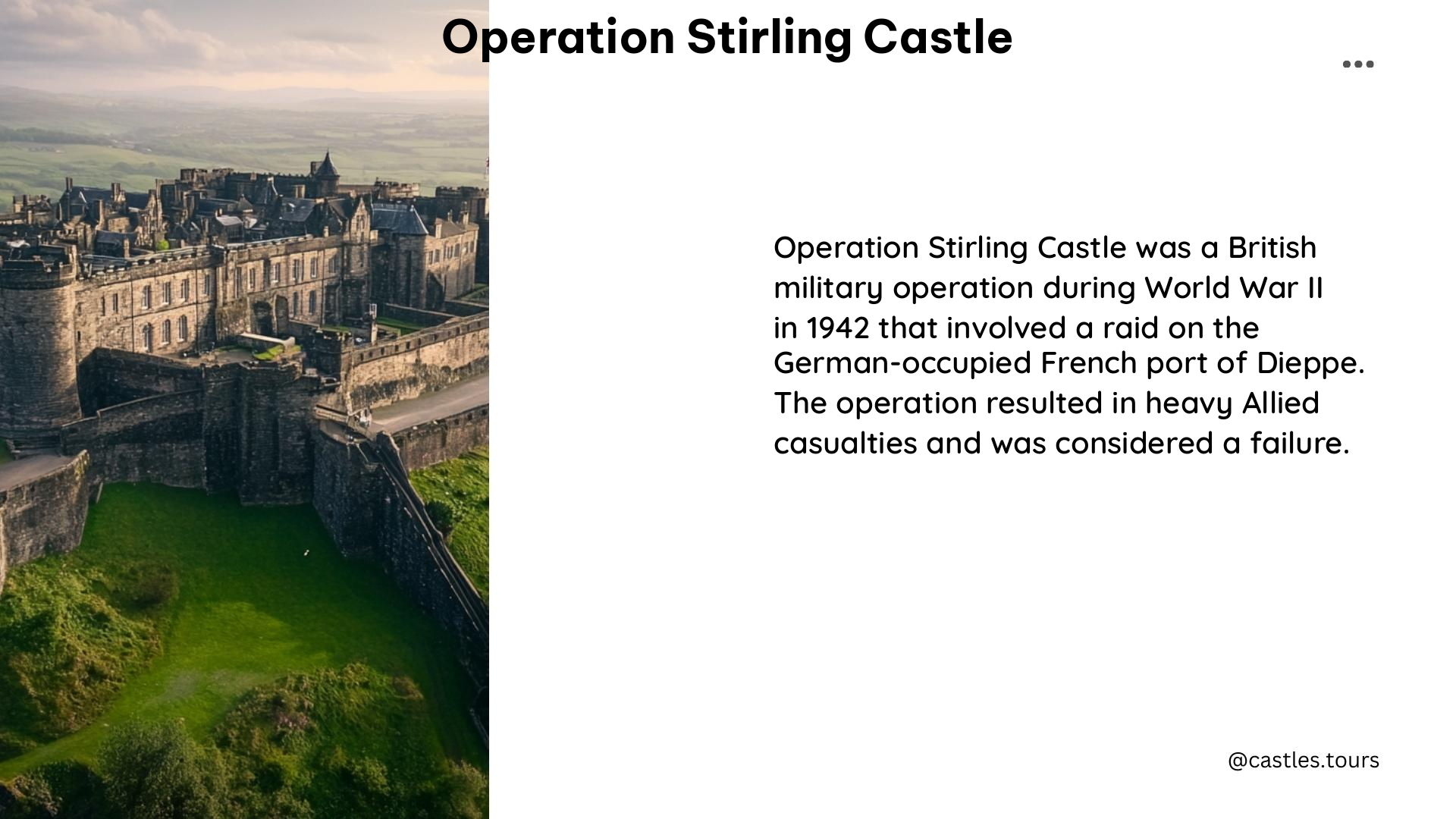Operation Stirling Castle was a military operation conducted by British forces during the Aden Emergency in 1967. The primary objective of this operation was to retake the Crater district in Aden, which had been abandoned by British troops after a mutiny by the Arab Armed Police and an ambush of British troops.
Key Participants

British Forces
- 1st Battalion, Argyll and Sutherland Highlanders (led by Lt-Col Colin Mitchell)
- 45 Commando
- Royal Northumberland Fusiliers
- Queen’s Dragoon Guards
- 60th Squadron, Royal Engineers
- 47th Light Artillery Regiment
- 15th Signal Regiment
- 60th Transport Squadron
Mutineers
- South Arabian Army (SAA)
- Arab Armed Police
- National Liberation Front (NLF)
- Front for the Liberation of South Yemen (FLOSY)
Outcome

The operation was a success, with the British forces retaking the Crater district without sustaining any casualties. However, the political decision to leave the Arab Armed Police in Crater led to further anti-British sentiment and terrorist attacks, resulting in additional casualties among the British troops.
Casualties
- During the entire period from June to August 1967, 24 British soldiers lost their lives in the Crater district.
Tactics
The operation involved a night invasion of Crater, which caught the enemy by surprise. The Argyll and Sutherland Highlanders, led by Lt-Col Colin Mitchell, performed a confident and symbolic march through the main street of Crater, playing regimental tunes.
Additional Details
- Date: The operation began on July 3, 1967.
- Outcome: The operation was successful in retaking the Crater district without sustaining any casualties among the British forces.
- Aftermath: The British forces remained in Crater until the end of the Aden Emergency. Despite the success of the operation, the political decision to leave the Arab Armed Police in Crater led to further anti-British sentiment and terrorist attacks, resulting in additional casualties among the British troops.
Operation Stirling Castle was a significant event in the Aden Emergency, demonstrating the British military’s ability to swiftly and effectively retake a strategic location. However, the political implications of the operation’s aftermath highlight the complexities of the conflict and the challenges faced by the British forces in maintaining control of the region.
